The Two-Parent Privilege – Part 5
Two-parent families and race.
Continuing this essay series on the benefits to children of two-parent families, this essay will explore data on the relationship between two-parent families and race. As economist Melissa Kearney writes in her book The Two-Parent Privilege: How Americans Stopped Getting Married and Started Falling Behind:
White and Asian children are significantly more likely to live with married parents, as compared to Hispanic and Black children. In 2019, 77% of White children and 88% of Asian children lived with married parents. The share among Hispanic children was 62%. Only 38% of Black children lived with married parents—a historically low share that reflects a downward trend over four decades.
In late 2019, the final data for annual out-of-wedlock birth statistics for 2018 were published. For all racial and ethnic groups combined, 39.6 percent of births were out-of-wedlock. For blacks, the number is 69.4 percent; for American Indians/Alaska Natives, 68.2 percent (Native Hawaiians/Other Pacific Islanders were at 50.4 percent); for Hispanics, 51.8 percent; for whites, 28.2 percent; and for Asian Americans, 11.7 percent.
Kearney writes:
Between 1980 and 2020, the married share of men ages 30–50 fell from 81% to 65% among White men (a decline of 20%), from 60% to 41% among Black men (a decline of 32%), and from 84% to 55% among Hispanic men (a decline of 35%). The share of Asian men who are married did not fall much: 81% to 75%.
(Incidentally, the dramatic increase in the number of black children raised in single mother homes has also dramatically affected the national sport of baseball. In a 15-year study of 10,000 youth baseball players, it was found that the sport is drawing many fewer black children than it once did. Researchers have found that 95 percent of college baseball players were raised in families with both biological parents at home. According to researcher David Ogden, “We’re looking at a generation who didn’t play catch with their dads, and that’s at the core of the chasm between baseball and African Americans.”)
Today, those with a high school education or less especially tend not to marry. Marriage rates are generally declining, but they are declining more rapidly among blacks than whites.
This phenomenon is aggravated by the rise in male incarceration rates.
The following graph, from the Brookings Institution, shows that not only is the black gun death rate much higher than the white gun death rate, but that the large majority of black deaths by gun are homicides whereas the large majority of white deaths by gun are suicides.
While the poverty rates of blacks and Hispanics are comparable, black women are significantly less likely to be married than Hispanic women, which may be contributing to the much higher rates of abortions of black children compared to Hispanic children, as black women see lower prospects of being married.
Ian Rowe and W. Bradford Wilcox summarize the data showing how two-parent families yield much better outcomes for all children, regardless of race here and here. In particular: “Today, 37% of black children are living in a home headed by their own two biological parents, 48% are living in a home headed by a single parent, and 4% are living in a stepfamily with one biological parent and one non-biological parent, according to the March 2020 Current Population Survey (CPS) … The first noteworthy finding in comparing patterns across race, gender, and family structure is that black children from intact families do uniformly better than white children from single-parent households. From poverty to college graduation to incarceration, black children and young adults from two-parent families are more likely to be flourishing than their white peers from single-parent families.”
A 2025 report from an intellectually diverse group of scholars at the University of Virginia, the American Enterprise Institute, the American Institute for Boys and Men, the Brookings Institution, the National Center for Black Family Life at Hampton University, the Institute for Family Studies, and the National Marriage Project, found the following regarding the positive results associated with involved father in families, including that racial divides in academic performance disappear when the presence of a father in the household obtains:
Boys and girls with involved dads in the Commonwealth get better grades, are less likely to have their parents contacted about behavioral or learning problems at school, and are less likely to be depressed. For instance, children with less involved dads are about 2 times more likely to have parents contacted about school problems and 3.7 times more likely to be diagnosed with depression
About 1 in 4 Virginia children live in a home without their biological fathers. Boys and girls who live in a father-absent home are only about half as likely to get good grades in school, about twice as likely to be depressed, and nearly three times more likely to have their parents contacted about school problems, compared to boys and girls who live in an intact (married or cohabiting) family with their father.
There is no racial divide in academic performance or school problems between white and black children from intact families in the state. More than 85% of these children get mostly A’s and B’s and less than 1 in 5 have parents contacted about school problems. By contrast, white and black children in father-absent families do markedly worse in school: fewer than two-thirds of black and white children from such families get good grades, and more than 1 in 3 have parents contacted for school problems.
Single parenthood is more associated with poverty, and so greater rates of single parenthood among black communities are associated with greater rates of black poverty. As Kearney writes:
Pooling resources across two people means amassing more resources than one person has alone. And as any parent will readily attest, raising children takes a lot of resources—including money, time, emotional energy, and more. Data backs up the common-sense view that families with two resident parents have a resource advantage. In one stark illustration, the official 2019 US Census statistics reveal that families headed by a single mother were five times more likely to live in poverty than families headed by a married couple; families headed by a single father were nearly twice as likely to live in poverty. For families headed by a woman without a spouse, the overall share living in poverty was 22.2%. For families headed by a man without a spouse, the share was 11.5%. These proportions compare to 4.0% among married-couple families. Some of this discrepancy reflects the fact that poor adults are more likely to become single parents than are higher-income adults. But much of it is simple math: having two adults in the home who can bring in income lessens the chance that a family is poor.
Marriage reduces poverty.
Less-educated, minority, and younger families (who are all at a higher risk of poverty) face markedly lower levels of poverty if they are married, in part because they often enjoy the benefit of two earners but also because if they get and stay married, they also are less likely to incur the large costs associated with family breakups and multiple partner fertility, from lawyers’ fees to child support.
In 2017, only 5 percent of white children under eighteen residing with their married parents lived in poverty, versus 12 percent of black children living with their married parents. The proportion of black children under eighteen living in poverty decreases from 45 percent for mother-only households and 36 percent for father-only households to just 12 percent for married-couple households. Being raised in a married-couple household was associated with the poverty rate for black children going down 73 percent compared to mother-only households and 67 percent compared to father-only households. 31 percent of white children raised in mother-only households live in poverty, versus just 12 percent of black children living with their married parents.
If marriage rates were restored to their 1960 levels, child poverty would be reduced dramatically.
Regarding income mobility, the New York Times reported that children who live with single parents are also less likely to move into higher income groups as adults.
And a large research project involving a study of over 40 million children and their parents found that the fraction of children living in single-parent households is the strongest indicator of less upward income mobility among all the variables explored. The researchers concluded that “family structure correlates with upward mobility not just at the individual level but also at the community level, perhaps because the stability of the social environment affects children’s outcomes more broadly.”
More recently, researchers published the following findings:
Children born into poverty in rural America achieve higher average income levels as adults than their urban peers. As economic opportunity tends to be more abundant in cities, this "rural advantage" in income mobility seems paradoxical. This article resolves this puzzle by applying multilevel analysis to new spatial measures of rurality and place-level data on intergenerational income mobility. We show that the high level of rural income mobility is principally driven by boys of rural-origin, who are more likely than their urban peers to grow up in communities with a predominance of two-parent households.
That research shows how, even for boys, the advantages of growing up in a two-parent household can more than negate the disadvantages of growing up in rural areas.
In the next essay in this series, we’ll explore how increased governmental welfare benefits have led to an increase in single-parenthood.

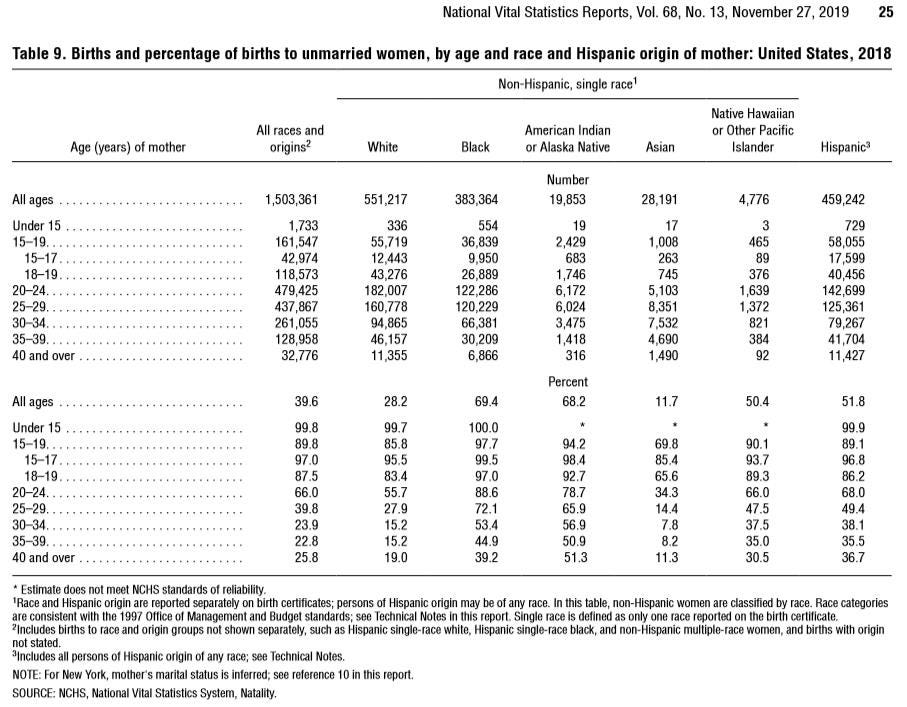









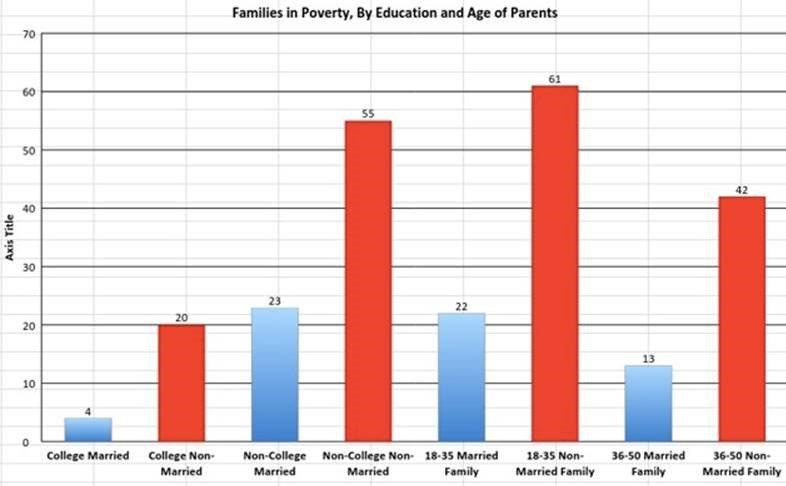
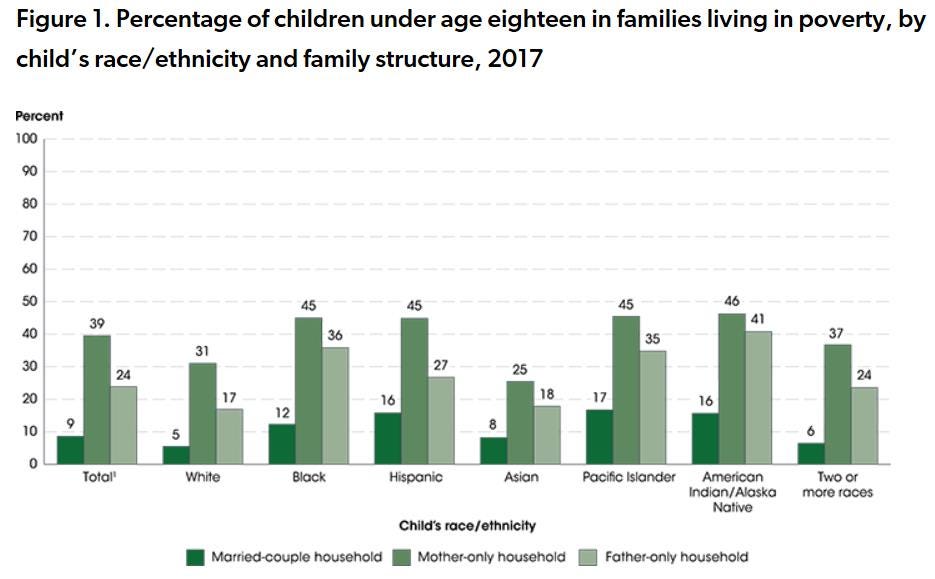
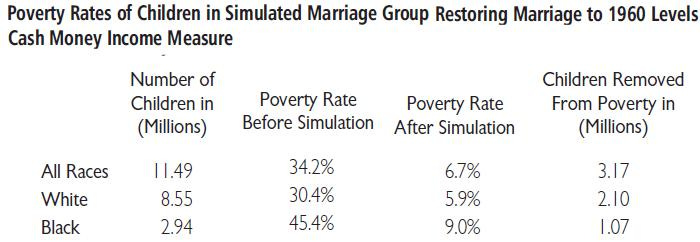
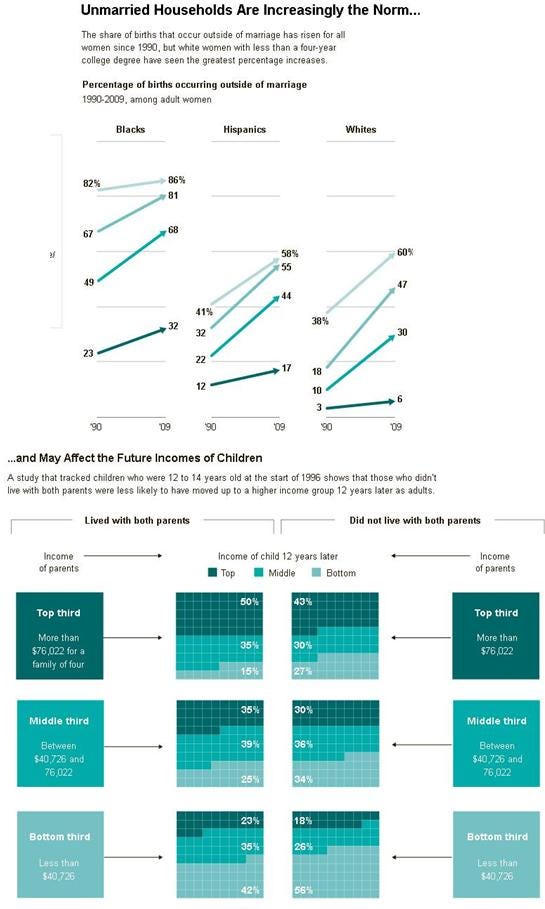

You know, two parent families have been the default since time began until very, very recently. These articles are really important, but the fact that they need to be written at all is the most amazing part. Many thanks for doing this.